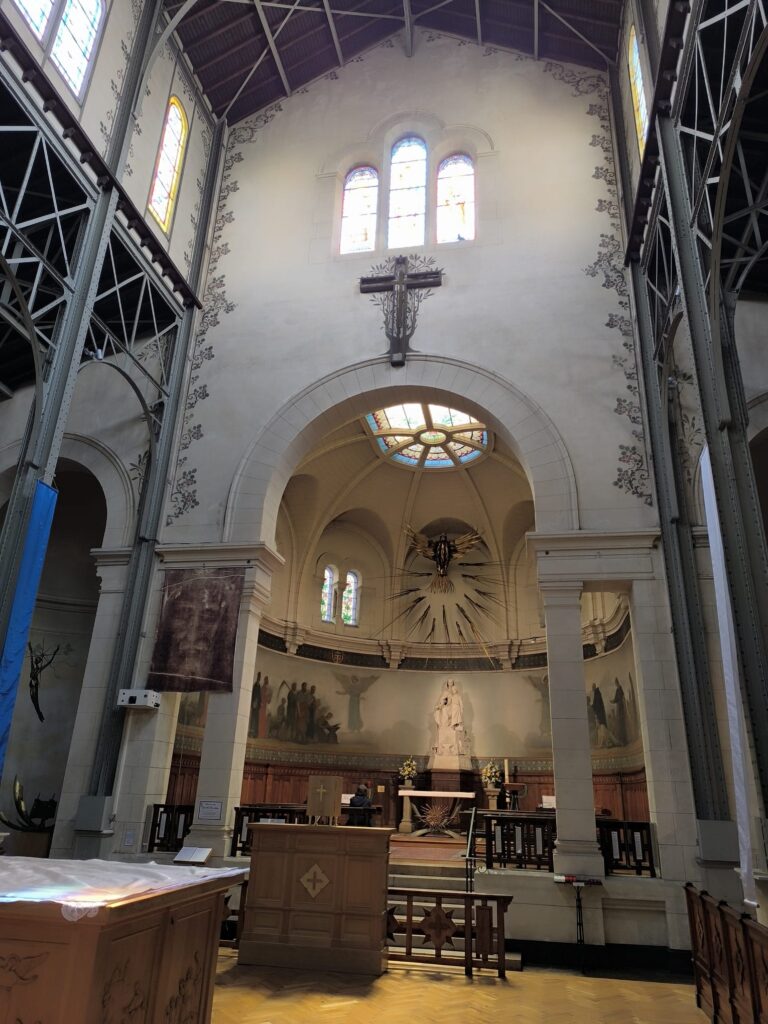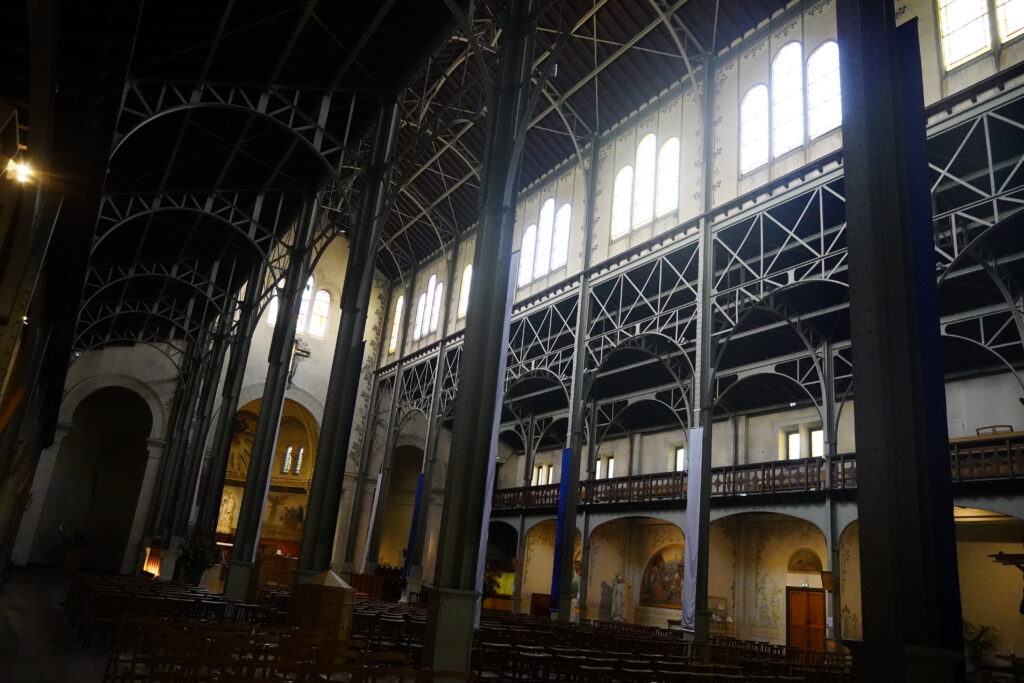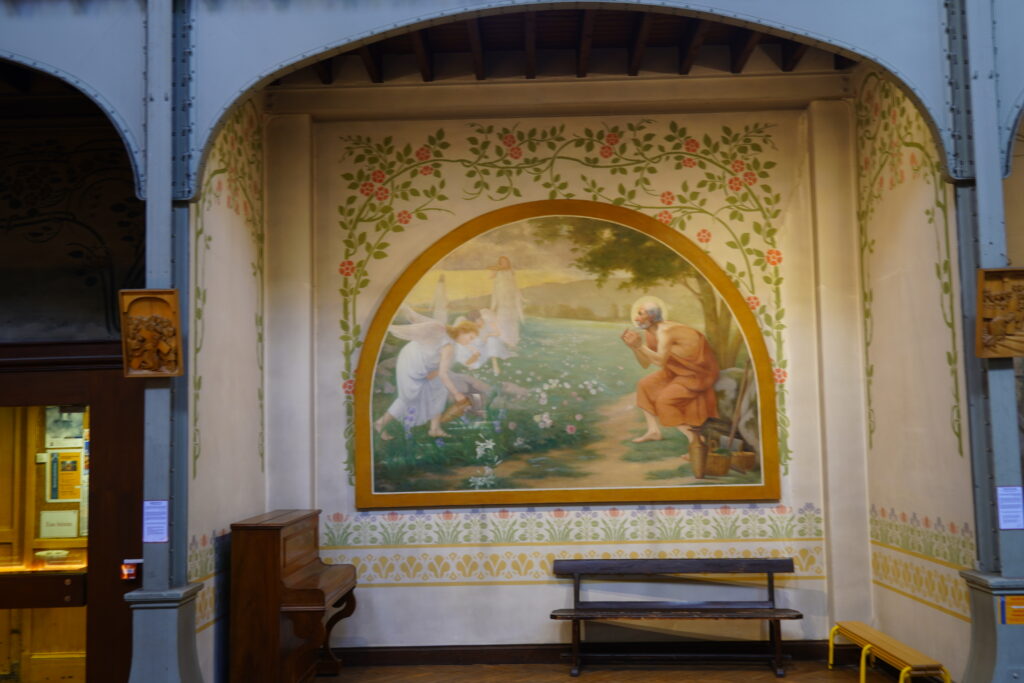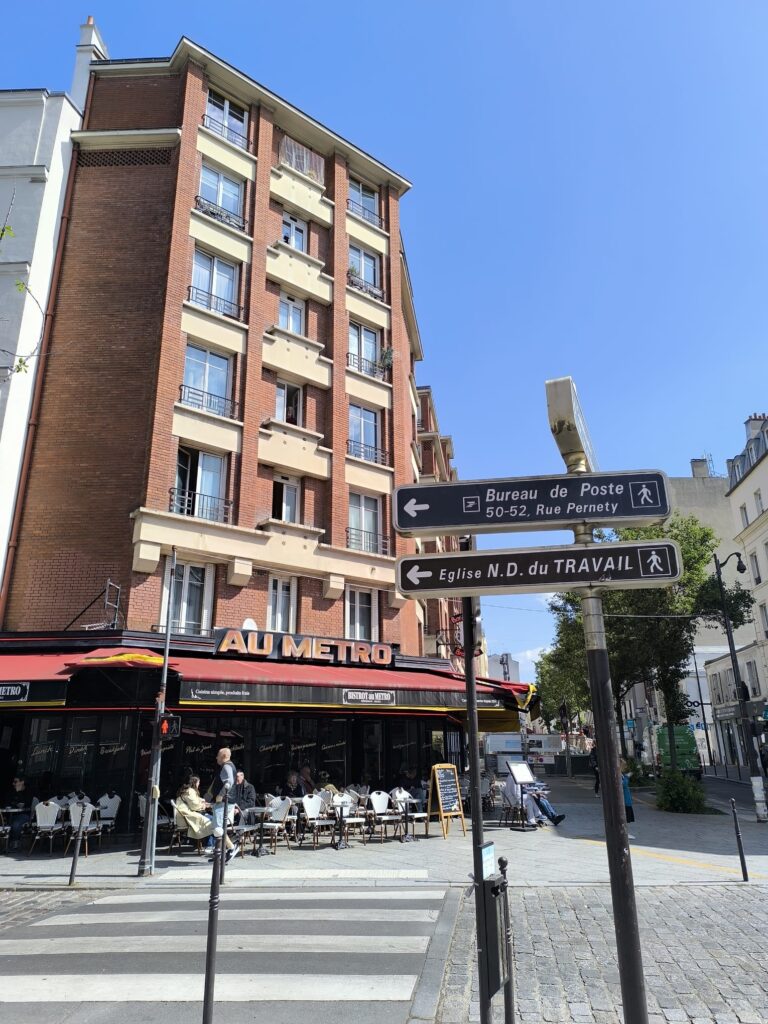In the 14th arrondissement of Paris, near the Montparnasse district, stands one of the city’s most unusual churches.
Notre-Dame du Travail doesn’t look like your typical Parisian church from the outside, and once you step through its doors, you’ll understand why locals call it “the factory church.”
I don’t remember how I found out about this church, but I’m so glad I did! It is worth a small detour on your way to Montparnasse Tower, for instance.

Main Topics of This Paris Church Looks Like a Factory Inside
A Different Kind of Church for Working People
Built between 1899 and 1902, Notre-Dame du Travail was created during a time when Paris was changing rapidly.
Many factories were being built, and workers were moving to the neighborhood. The church’s founder, a priest named Abbé Jules-Auguste Soulange-Bodin, had an unusual idea: create a church that would feel familiar to the working families in the area.
Instead of building a traditional Gothic church with stone arches and columns, Soulange-Bodin hired architect Jules Astruc to design something completely different. The result was a church that looked and felt like the factories where the local people worked.

Inside the Iron Church
When you walk into Notre-Dame du Travail, you see exposed iron beams and metal supports everywhere. The interior looks more like a train station or factory building than a traditional church. Large iron columns stretch up to the ceiling, connected by a network of metal beams that are painted and left completely visible.
The iron framework isn’t just for decoration; it actually holds up the entire building. The architects got much of the ironwork from the 1889 Universal Exhibition, the same event that gave Paris the Eiffel Tower.
Some of the metal beams came from a building called the Galerie des Machines that was torn down after the exhibition ended.
Sacred and Industrial Together
What makes Notre-Dame du Travail special is how it mixes industrial materials with traditional church elements. While iron beams dominate the space, the church still has stained glass windows, religious statues, and a proper altar. The combination creates a unique atmosphere that feels both religious and modern.

The stained glass windows show scenes of different jobs and trades alongside traditional religious pictures. You can see blacksmiths, carpenters, and other workers displayed with the same importance as biblical figures. This sent a clear message that manual work had dignity and value.
A Church for Its Time
The church’s design reflected a movement in the late 1800s that wanted to connect religion with the daily lives of industrial workers. At a time when many churches seemed out of touch with working people’s struggles, Notre-Dame du Travail offered something different: a holy place that understood and honored their world.
The name itself, “Our Lady of Work” makes this mission clear. This wasn’t just a church for workers; it was a church about work, treating labor as something spiritual and important.
Visiting Today
More than 120 years later, Notre-Dame du Travail still serves its community while attracting curious visitors from around the world. The church remains active, hosting regular masses and community events. Its unique design has also made it popular for concerts, especially organ music, where the industrial space creates rich, interesting sounds.
You can find the church at 59 Rue Vercingétorix in the 14th arrondissement. The nearest metro station is Pernety on Line 13.

Visitors are welcome during regular hours. The access is free of charge.
Here’s a video about this unusual church:
Why It Still Matters
Notre-Dame du Travail shows us an important moment in history when people reimagined what a church could look like. In an era when many churches struggle to stay relevant to modern life, this 120-year-old “factory church” demonstrates how religious buildings can embrace rather than reject the contemporary world.
For anyone interested in how faith, architecture, and social history connect, Notre-Dame du Travail provides a unique example of how sacred spaces can be both traditional and innovative. It proves that the divine can be found in unexpected places, even in the industrial landscape of a changing city.
Today, as Paris continues to change and people continue to ask questions about community, work, and belonging, Notre-Dame du Travail’s message feels as important as ever. Sometimes the most meaningful spiritual experiences happen not despite our everyday world, but because we’re willing to see something sacred within it.
- What the Sea Teaches Us About Slowing Down in a Fast World - September 27, 2025
- How to Make a Rental Property Feel Like Home in Just a Few Days - September 15, 2025
- Planning To Splurge On Your Next Vacation? Do It In Style - September 11, 2025

